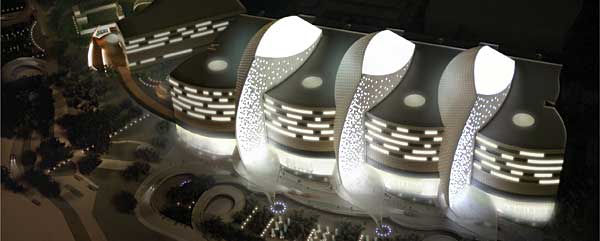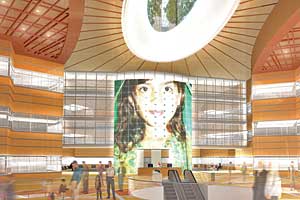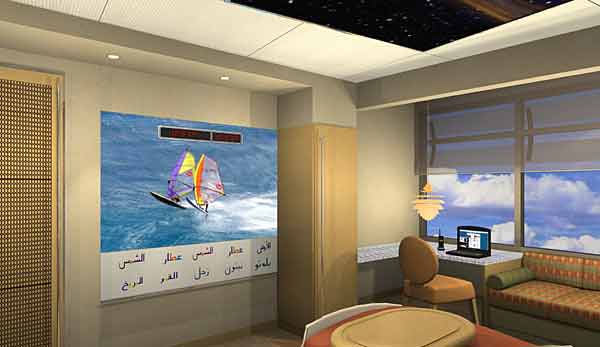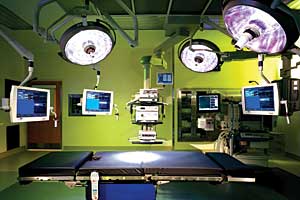The New Age of High-Tech Hospitals
All systems go
The sheer number of digital systems that go into a hospital has encouraged clients to embrace convergence. On the medical side, these systems can include both informational and clinical kinds, such as Electronic Medical Records (EMR), Picture Archival and Communications Systems (PACS), and radio frequency identification tagging (RFID). Systems such as nurse call, code blue, fire alarm, and telemetry and patient monitoring (vitals) are placed on separate networks, since they are critical systems. Communications systems, such as voice-over Internet protocol (VOIP), video- and teleconferencing, and overhead paging, are also typically separate. Security, including infant abduction systems, are yet another separate item. The building systems side, typically the province of the mechanical engineer and a building-management system (BMS), often consists of monitoring the mechanical ventilation systems, indoor air quality, and humidity, as well as central plant equipment operating status. In some cases, the BMS may monitor lighting systems and energy use, though this is less common.
Â
Â
|
||||||||
Â
Hospitals have pushed for medical systems to go wireless, which conceivably allows medical staff, particularly nurses, to stay mobile and yet connected. For example, with a VOIP system, which routes telephone calls across a network-as opposed to a conventional phone system-a hospital can direct a call for a nurse to one of several locations: an office phone, pager, cell phone, overhead paging speaker, or even the nurse call device at a patient's bedside. This connectivity depends on a distributed antenna system (DAS) throughout the hospital; the antennae look like smoke detectors, but they are basically wireless on-ramps to the hospital's network. What makes this transfer between communication device, antenna, and network even possible is so-called "middleware," a software solution that translates the voice data between these various digital components. Mario Sanchez, a technology consultant with the Los Angeles office of RTKL Architects, refers to this concept as the "call-escalation procedure." Once a call is converted to data, moving it around the network simply depends on the preference of the hospital. "Facilities are being very slow at adopting this because it's a huge capital investment," Sanchez says, noting that many hospital projects occur on existing campuses where design teams face established standards for IT infrastructure.
Â
Â
|
||||
Regardless of the potential for convergence, and given the sweeping nature of the Health Information Patient Privacy Act (HIPPA) passed in 1996, directing large amounts of sensitive data around digital networks has concerned many hospitals. This becomes more critical when a hospital adopts EMR systems, where a patient's entire medical history may be moving throughout a statewide medical records system, such as will be the case in Wisconsin. Mark Valenti, the president and C.E.O. of Pittsburgh-based technology consultants The Sextant Group, says firewalls are effective, but there can still be considerable security risk. "It's less expensive to build a couple of networks than to think about a converged environment, once you start to consider the risks," Valenti says. This is mainly true because most digital devices are fed with copper wire, since fiber optics are expensive and are used mainly for the backbone of the system. Copper wire, Valenti says, is easy to strip of data, but fiber-optic cables are secure and, since they hold so much data, would make systems convergence a snap. However, he says it could be 10 to 20 years before fiber optics are cheap enough to replace copper.















